
10 Best Attractions In Hawaii
Hawaii offers an array of activities and attractions, but it is a unique culture, climate, and/or geography that makes these 10 attractions a must-see. Ranked by the number of visitors attending in 2005, this list is composed of the most-visited attractions in Hawaii.
To submit your pick for the 10 Best Attractions in Hawaii, click here.
Hawaii Volcanoes National Park, Big Island
The most-visited attraction in the Sate of Hawaii is the Hawaii Volcanoes National Park with around 3 million visitors per year. This must-see park encompasses the summit of the world’s most active volcano, Kilauea, and the world’s most massive volcano, Mauna Loa. The park offers unique hiking and camping opportunities. Start at the Kilauea Visitor Center to receive the latest information on trails, range-led activities, road conditions, and safety precautions.
If you are only visiting for the day explore views of dramatic volcanic landscapes via Crater Rim Drive, an 11-mile road that surrounds the summit caldera with many scenic stops and short walks. You can also drive down the Chain of Craters Road to explore the East Rift and coastal area where the lava flowed into the ocean in 2003, and, depending on the always-changing volcanic activity, you may be able to view active lava flow. Must-do’s are: all the scenic stops on Crater Rim Drive, Kilauea Visitor Center, and eat at the Volcano House.
Start planning your Big Island vacation.
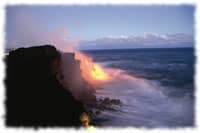
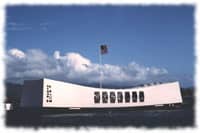
USS Arizona Memorial, Oahu
Visiting the remains of the USS Arizona will encourage you to contemplate the sense of sacrifice our military personnel endured during the Pearl Harbor attack. The USS Arizona Memorial is the mid-section of the sunken battleship and offers visitors the opportunity to learn more about that fateful day. The guided tour of the USS Arizona Memorial includes a 23-minute documentary film, a short boat trip and a self-guided exploration of the Memorial. Must-do’s are: visit the Remembrance Circle, rent the audio headset for the tour, and explore the visitor center.
Start planning your Oahu vacation.
Haleakala National Park, Maui
The Haleakala National Park preserves the Haleakala volcanic area on the island of Maui. Explore the summit area and/or the Kipahulu area down on the coast, but be aware that these park areas are not connected by road and it will take two separate trips to visit both. Both Haleakala National Park areas are unique; the summit offers spectacular views and scenery, while the valley of Kipahulu is lush and lined with beautiful freshwater pools and waterfalls including the pools of Oheo. Must-do’s are: hike the two-mile trail leading through the Oheo Gulch and swim in the lower pools, and visit the visitor center.
Start planning your Maui vacation.
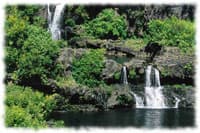
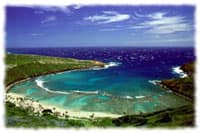
Hanauma Bay Nature Preserve, Oahu
This beautiful, sheltered bay was once damaged by years of excessive use and neglect. In 1990, the City and County of Honolulu began great plans to restore Hanauma Bay. After more than a decade of efforts, Hanauma Bay was restored into a pristine marine ecosystem by reducing the number of visitors, establishing an education program, and instituting supportive restrictions. These improvements have created some amazing snorkeling and swimming opportunities. Must-do’s are: visit the education center, pick up a fish I.D. card before snorkeling, and talk with the volunteers at the beach kiosk.
Start planning your Oahu vacation.
Diamond Head State Monument, Oahu
Diamond Head is Hawaii’s most famous landmark. Known in Hawaiian as Le’ahi, so named by Hi’laka, the sister of the fire god Pele, because the summit supposedly resembles the forehead (lae) of the yellowfin tuna fish (‘ahi). It wasn’t until the late 1700’s, when western traders thought they had found diamonds on the slope of the crater, that they began to call it Diamond Head. But before you head to the Diamond Head State Monument to dig for diamonds, you should know that (to the disappointment of the western explorers and traders) the so-called diamonds were merely calcite crystals, worthless to mine.
The must-do at the Diamond Head State Monument is the short hike through old military bunkers. (Bring water and a flashlight.) The historical trail to the summit is an easy 1.4 mile hike that climbs an elevation of 560 feet and ends with sweeping views of the Honolulu area. There are handrails, plenty of places to rest, and places of interest, so allow 1.5 to 2 hours for a leisurely round-trip hike. Also, bring a flashlight because portions of this trail go through long, dark tunnels. Amazingly, some locals and visitors jog up and down Diamond Head for exercise.
To get to the access road to the trail, follow Kalakaua Avenue to Kapiolani Park. Go north on Diamond Head Avenue to 18th Avenue.
Start planning your Oahu vacation.


Puuhonua o Honaunau National Historical Park, Big Island
Located on the Big Island, the Pu`uhonua o Honaunau National Historical Park is a 182-acre park full of archeological sites and reconstructions of an ancient Hawaiian “Place of Refuge”. This sacred site was once home to Hawaiian royalty and a place of refuge for those who broke a kapu (ancient Hawaiian law) or defeated the military. This Hawaii historical park offers a self-guided tour and learning opportunities. Must-do’s are: the self-guided tour, photographing the many green sea turtles sunbathing on the beach, and playing a game of kônane.
Start planning your Big Island vacation.
Kilauea National Wildlife Refuge, Kauai
Kilauea Point National Wildlife Refuge is located on Kauai’s north shore, and is 203 acres of protected land. Discover Hawaii’s wildlife as you explore the refuge, such as the Pacific golden plover, Laysan albatross, and Hawaii’s State Bird (the nene). Just off shore you might glimpse humpback whales (in winter months), Hawaiian monk seals, and spinner dolphins.
The Kilauea Lighthouse is a short walk from the parking lot and has spectacular views of the Pacific Ocean. The Kilauea Lighthouse, the northernmost point of the inhabited Hawaiian Islands, was first illuminated on May 1, 1913, producing a double flash every ten seconds. The original tower with its clamshell lens (the largest of its kind in the world) is still intact but now turned off, replaced by a low-maintenance, more efficient light beacon. This landmark lighthouse was listed on the National Register of Historic Places on October 18, 1979, and now houses its own museum about itself. Must-do’s are: take a tour with a volunteer, shop at the small store in the visitor center, and get a picture of you with the lighthouse in the background.
Start planning your Kauai vacation.
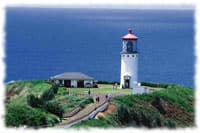

Panaewa Rainforest Zoo, Big Island
The Panaewa Rainforest Zoo is the only tropical zoo in the United States and shouldn’t be missed during your Big Island vacation. You will encounter a variety of rainforest animals and endangered Hawaiian animals, such as a white Bengal tiger, spider monkeys, lemurs, nene geese (the Hawaiian State bird), and over 80 other animal species. The Panaewa Rainforest Zoo is also considered a botanical garden covered with orchids, bamboos, 100 varieties of palms, and a water garden. The Panaewa Zoo, about 4 miles from Hilo, is open daily, 9 a.m.-4 p.m. and from 1:30 p.m.-2:30 p.m. on Saturday. Admission is free. Must-do’s are: the petting zoo (only on Saturday), the white Bengal tiger (Namaste) feeding at 3:30 daily, and the gift shop.
Start planning your Big Island vacation.
Waimea Arboretum and Botanical Garden, Oahu
Also known as the Waimea Valley Audubon Center, the Waimea Arboretum and Botannical Garden introduce you to 36 major botanical collections. Over 150,000 guests per year follow the sunlit paths, explore the gardens, and visit the crystal clear pool below Waihi Falls. Most of the plant collections are native Hawaiian plants, focusing on island ecosystems and is home to a variety of Hawaiian birds. Located in the gorgeous Waimea Valley, The Waimea Arboretum and Botannical Garden is a great experience for the whole family. Must-do’s are: have a picnic, and visit the Waimea Valley Audubon Center.
Start planning your Oahu vacation.


Waimea Canyon, Kauai – “Grand Canyon of the Pacific”
Waimea Canyon is the awe-inspiring, breath-taking “Grand Canyon of the Pacific,” as Mark Twain dubbed it. The canyon is one mile wide, 10 miles long, and over 3,600 feet in depth. The deep canyon gashes in the landscape look like the claw marks of some immense prehistoric creature. The play of light and shadow throughout the day on the colorful striated layers of rock is extraordinary. A fun pastime is to stand at one of the Waimea Canyon overlooks and watch the reaction of visitor after visitor, as their jaws drop, and they become first speechless and then breathless as they witness this spectacle of nature for the first time, realizing that words fail them and that there must be a God.
Several hiking paths lead to some of the most dramatic waterfalls in Hawaii. Visit the Kokee Museum at the top of the canyon for details, maps, history, etc. Also, be sure to go to the top of the canyon and peek over the Kalalau Valley Lookout for a divinely-inspired view of the Na Pali coastline, majestic waterfalls, and the Blue Pacific, all from well above the perch of sea birds and tour helicopters.
Start planning your Kauai vacation.
Explore more “10 Best in Hawaii” Lists…